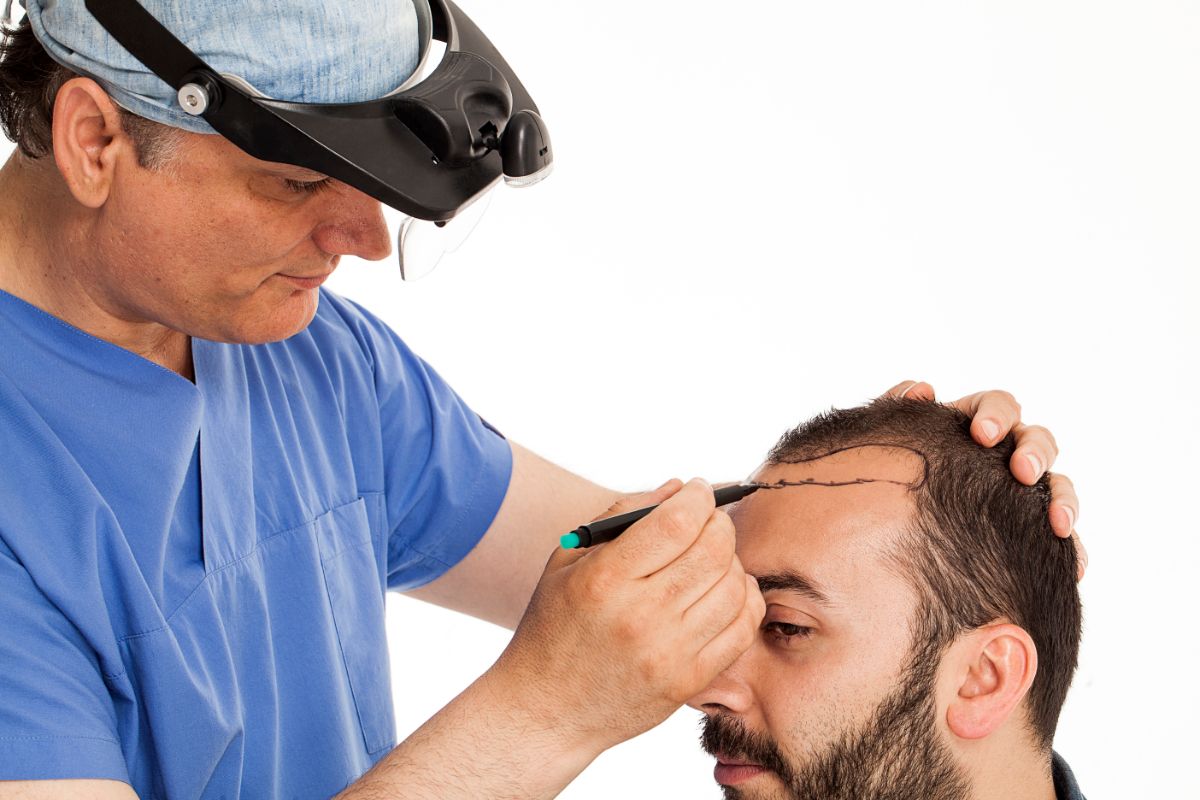The tools and materials used to harvest hair grafts are nowadays essential to guarantee a successful hair transplant. Thanks to this modern equipment, follicular transplants are not only faster but also very precise.
In this article, we will take a detailed look at the different tools used in hair graft harvesting and explain their function and importance in the hair transplant procedure. We will also discuss how these tools can help maintain a sterile environment for safe and efficient harvesting.
The most commonly used tools for hair graft harvesting
Hair graft harvesting involves specific procedures and tools. The most commonly used tools include forceps, forceps, scissors and scalpel.
The surgeon begins by harvesting grafts with a short-headed forceps, more specifically with a forceps adapted for this purpose. The surgeon then removes the grafts with a scissor, which is more or less fine depending on the volume of grafts needed. Once the grafts have been removed, the scalpel is used to make incisions to separate the individual grafts, which can be placed separately in the area to be restored.
All of these instruments allow for the necessary harvesting to be done with precision and are among the most reliable surgical techniques.
Advantages and disadvantages of the different tools
Hair transplants are a very common and popular solution if you want to give your hair more density and volume. Regardless of age or gender, hair transplants have advantages and disadvantages that need to be considered and techniques that could be offered; for example, they include FUT and FUE transplants.
FUT hair transplants are a quick and effective solution for obtaining a fuller head of hair. There are many advantages, including the lack of scarring and the ability to obtain large areas of grafts. However, there are some disadvantages such as the risk of complications, possible pain during healing and the necessities involved.
FUE transplants, on the other hand, are slower than FUT, but offer a less invasive process with the possibility of preventing complications and pain. However, these hair transplants tend to be more expensive and require more time for the transplant sessions.
Everyone should consider these pros and cons to find the method that best suits their needs and personality. It is important to consult a specialist doctor, such as Hasci Swiss, before using any type of hair grafts.
How to choose the right tools
Before jumping into using these products, you should take the time to familiarize yourself with the different varieties available. The most commonly used hair grafting tools are hair pins, invisible braids, surface inserts, self-adhesive strips and hair rings.
Once you’ve chosen the right tool, it’s important to make sure it’s well maintained so it lasts longer. Vacuum it to make sure it’s free of hair products and store it in a dry, clean place.
Finally, it’s important to remember that hair grafting tools are meant to be used with the corresponding products. So make sure the type of tool you choose is appropriate for the extension you are wearing.
Conclusion on the main tools used for hair grafting
In conclusion, the tools used for hair graft harvesting offer optimal accuracy and safety for patients. They are proven methods that not only ensure satisfactory results, but also provide greater protection of the surrounding tissue and hair tissue.
The tools are designed to maximize effectiveness and minimize contamination and absorption of harmful substances. The tools also offer excellent medical flexibility and apply moderate pressure to the tissue, reducing risk and maximizing results.
